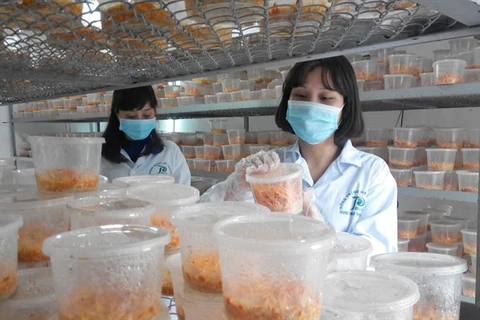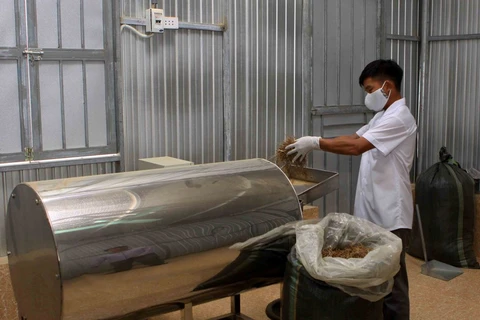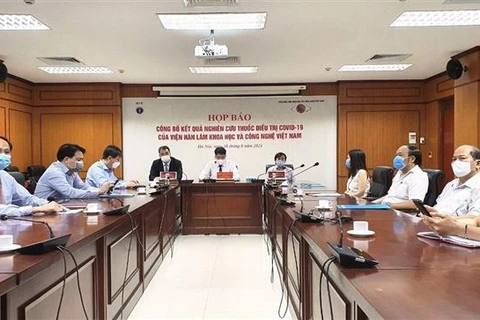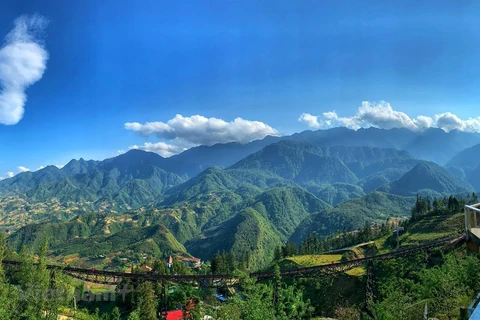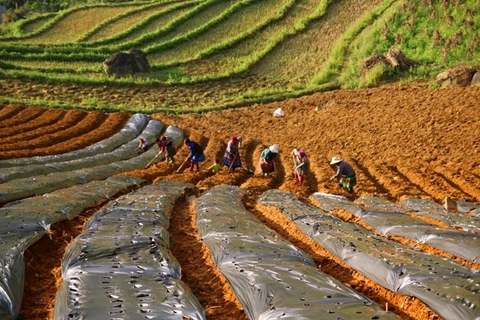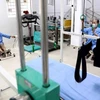Hanoi (VNA) - Home to over 5,100 medical plant species, Vietnam has potential for planting and the turning herbal medicine industry into an economic advantage, even for export, according to Head of Traditional Medicine Management Department under the Health Ministry Nguyen The Thinh.
In a recent interview granted to the e-newspaper VietnamPlus, Thinh mentioned the potential and orientations for the development of the herbal medicine industry in Vietnam, while highlighting support policies and investment incentives to promote the advantage of the herbal medicine industry have contributed to boosting socio-economic development and poverty reduction.
Reporter: How do assess the development potential of Vietnam's herbal medicine industry?
Mr. Nguyen The Thinh: Vietnam boasts a diverse source of rare and precious natural medicinal herbs.
 Head of Traditional Medicine Management Department under the Health Ministry Nguyen The Thinh. (Photo: VietnamPlus)
Head of Traditional Medicine Management Department under the Health Ministry Nguyen The Thinh. (Photo: VietnamPlus) Currently, domestic sources of medicinal herbs serving the production of traditional medicine products meet about 30% of the demand.
Attention has been paid to growing medicinal plants, however, Vietnam still has to import materials for producing medicines, especially from China.
In recent years, Vietnam has paid heed to inspecting and controlling the quality of medicinal herbs. We regularly conduct inspections and monitoring to identify substandard medicinal materials.
The quality of medicinal materials used in healthcare facilities is top quality. Drugs introduced into hospitals must go through a bidding process, ensuring their origin and quality before being used for medical treatment. Only less than 1% of medicinal materials in the market do not meet quality standards.
Reporter: What is your opinion on the shortage of medicinal materials and traditional medicines in healthcare facilities?
Mr. Nguyen The Thinh: In recent times, the Traditional Medicine Management Department has guided the Ministry of Health's leadership on payment of health insurance for traditional medicines.
Regarding bids for medicine, the bidding price of medicinal materials at public establishments is much lower than the market price. The reason is that the price of medicinal herbs depends on the season. When the bidding price is much lower than the market price, certainly, suppliers cannot participate in the bidding.
Recently, the supply of medicinal materials and traditional medicines to public healthcare institutions has stabilised following Government directions.
The increasing prices of drugs are a result of the higher requirement for medicine quality. Particularly, with many medications relying on imported raw materials from foreign countries, cost is affected by global supply shortages.
Therefore, in the long-term plan, it is imperative to invest in science and research to further develop domestic cultivation of medicinal plants as substitutes for imported goods.
To do this, attention should be paid to investing in scientific research to create high-quality medicinal products to serve healthcare and natural treatments.
Reporter: Vietnam aims to export medicinal materials, so what are the potential products and types of medicines that the country can export?
Mr. Nguyen The Thinh: Regarding the export of medicinal materials, we have strengths in some key products such as cinnamon, lemongrass, lime, turmeric, and gac fruit (Momordica cochinchinensis).
Specifically, for turmeric, Vietnam signed export contracts with Japan and the US. However, the current production volume is likely not to meet export demand.
The cinnamon cultivation area in Vietnam is around 150,000 hectares, accounting for 17% of the global cinnamon cultivation area. Vietnam is the third-largest producer and exporter of cinnamon globally in terms of volume, following Indonesia and China.
Vietnam mainly exports crude cinnamon oil to China and several other countries. It is estimated that by 2025, Vietnam will have around 200,000 ha of cinnamon growing area. Yen Bai is now the largest cinnamon growing region in Vietnam.
Quang Nam, Cao Bang, and Lao Cai are also localities with favourable conditions for cultivating this plant.
Meanwhile, anise is a native plant that very few countries possess. Vietnam and China are the two large anise cultivation areas in the world.
Photo: Vietnam establishes a longstanding traditional medicine system thousands of years ago. (Photo:VietnamPlus)
According to the Ministry of Industry and Trade (MoIT), Vietnamese anise and cinnamon products are widely consumed in various markets, including South Asia (India, Bangladesh), the Middle East (the United Arab Emirates, Pakistan), East Asia (Japan, Taiwan, the Republic of Korea), the US, and member countries of the European Union (EU).
As many as 22 provinces and cities nationwide are benefiting from the State’s investment to develop pilot models of medicinal plant cultivation. These models are expected to be expanded in the future.
To fully exploit the potential of medicinal plants, relevant ministries, and sectors need to collaborate in developing the processing industry for these plants. Meanwhile, Vietnamese trade offices abroad can assist in finding markets for products of cultivation regions. Businesses should also actively join international exhibitions and trade fairs to seek potential partners.
In addition, it is necessary to have policies that encourage research projects aimed at conserving genetic resources and developing medicinal plant varieties.
Thank you for your conversation!


